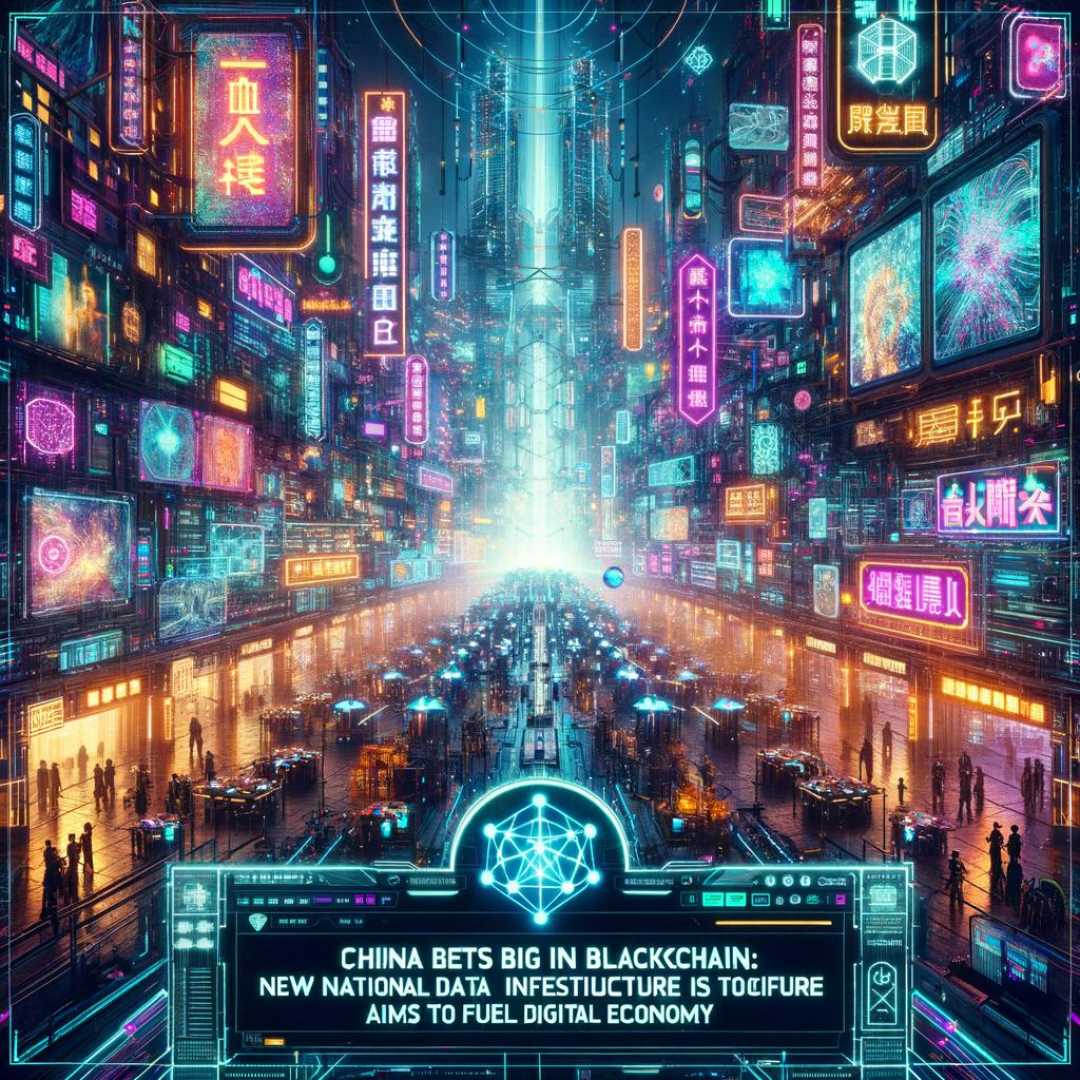In a world increasingly driven by digital innovation,China is stepping boldly onto the blockchain stage,positioning itself as a global leader in the data revolution. With the unveiling of its ambitious National Data Infrastructure initiative,the contry is not merely tinkering with technology but is making a strategic bet that could redefine its economic landscape. This new framework seeks to harness the power of blockchain to enhance data security,streamline transactions,and pave the way for a robust digital economy. As other nations grapple with the implications of this transformative technology, China’s commitment to integrating blockchain into its national infrastructure raises pressing questions about the future of economic growth, privacy, and the intricate balance between innovation and regulation. join us as we explore how China’s bold initiative is set to impact not just its own economy but the global stage, potentially changing the way we think about data and its role in our everyday lives.
Embracing the Future: How china’s National Data Infrastructure Shapes Blockchain Innovation
China is making significant strides in innovating its digital economy through a steadfast commitment to blockchain technology. The launch of its national data infrastructure represents a radical shift towards data-centric models and a giant leap in digitization.Based on a deep-seated belief in the transformative power of blockchain, China’s approach positions it as a pivotal player in pioneering global technological innovation.
The new data infrastructure is facilitated by blockchain systems, which provide unparalleled data transparency, integrity, and traceability. The country’s bold initiative not only promotes economic development, but also encourages significant progress in scientific research, industrial production, public service, and more.Here’s how:
- Scientific research: Blockchain ensures data validation and reproducibility, boosts scientific integrity while preventing falsification, and eases the sharing and exchange of research data.
- Industrial production: By ensuring transparency and security in supply chain management, blockchain technology can streamline production, reduce costs, and assure quality control.
- Public service: Public records like registers, certificates, or licenses can be digitized and effectively managed on a blockchain, enhancing efficiency and reducing bureaucracy.
| Sector | Potential Impact of Blockchain |
|---|---|
| Scientific research | Improves data validation and reproducibility |
| Industrial production | Ensures transparency and security in supply chain management |
| Public service | Enhances efficiency by digitizing public records |
All of these transformations underscore the tremendous potential of China’s national data infrastructure in shaping a global blockchain revolution. By embracing future-forward solutions and investing heavily in blockchain technology, China is setting the stage for a digitized economy built on trust, transparency, and decentralization.

Unlocking Potential: The Role of Blockchain in Enhancing Chinas Digital Economy
In a move that shows its strategic bet on blockchain technology, China is harnessing the power of blockchain to spearhead the development of its digital economy. With the introduction of its new national data infrastructure, China aims to unlock blockchain’s unlimited potential to drive its digital growth. existing digital services and sectors are poised to receive a radical change,all thanks to the disruptive capabilities of this groundbreaking technology.
China’s monumental pivot to blockchain technology is predicated on the belief that it will enhance several areas of its digital economy. Thus, the government has embarked on a plan to institute a streamlined, immutable, and secure ledger system that would form the backbone of its burgeoning digital economy. Its proposed uses include:
- Trustworthy Transactions: Blockchain’s distributed ledger technology ensures the transparency, traceability, and verifiability of digital assets.
- Smart Contracts: These will automate business operations and transactions, improving efficiency and minimizing human error.
- Identity Verification: Helps in the prevention of identity theft and ensures secure access to digital services.
- Supply Chain monitoring: Facilitates the tracing of goods from origin to destination, thereby enhancing product authenticity and quality control.
| Sector | Proposed Blockchain Submission |
|---|---|
| financial | Cross-border payments, anti-money laundering systems, and insurance claims processing |
| Healthcare | patient data storage, drug traceability, and healthcare supply chain transparency |
| Energy | Obvious energy trading, renewable energy certificates, and decentralized energy resources |
| Logistics | Real-time tracking of goods, verification of product authenticity, and improving operational efficiency |
china’s massive investment in blockchain has the potential to revolutionize its digital economy. By ensuring transparency, enhancing facts security, and fostering new financial and business models, blockchain could well emerge as China’s secret weapon in prevailing in the global digital economy race.
Collaborative Strategies: Fostering Public-Private Partnerships in Blockchain Development
As the world watches cautiously, China makes a bold and strategic move, investing heavily in blockchain technology. This isn’t simply a minor tweak to the nation’s digital landscape; it showcases Beijing’s full-fledged commitment to establishing a next-gen national data infrastructure. Crucial to this endeavor is the emphasis on public-private partnerships. A blend of state strategy and private entrepreneurial skill will fuel digital growth, they believe.
Public-private collaboration: A win-win approach
The beauty of blockchain is its inherent decentralization, making it the perfect platform for public-private partnerships to grow. The government provides a regulatory framework,process authenticity,funds,and infrastructure,while private enterprises bring in innovative solutions,agility,technical prowess,and market-driven strategies to the table. The synergy born out of these collaborations is what beijing aims to bank on.
- Regulatory Framework: The government lays out comprehensive regulatory guidelines, setting the stage for the adoption of blockchain.
- Financial Support: Financial backing from the state acts as a safety net, encouraging entrepreneurs to take risks and innovate.
- Innovation and Agility: Usurping traditional methods, private players leverage the high potential blockchain technology, setting not only a national example but a global one, as well.
- Market-Driven Strategies: Private enterprises, with their deep understanding of consumer behavior, inject a market-driven approach, making the solutions more viable and enduring.
| Role | Actor |
|---|---|
| Regulatory Framework and Financial Support | Government |
| Innovation & Agility,Market-Driven Strategies | Private Enterprises |
This pioneering endeavor by China can set a precedent for other nations,displaying how government and private sectors can collude to recalibrate an economic landscape and trigger a blossoming digital economy.
Navigating Challenges: recommendations for Sustainable growth in Chinas Blockchain Ecosystem
Over the past few years, China has made a significant investment towards securing a sustainable position in the global blockchain ecosystem. In an effort to support this digital revolution, the Chinese government is developing a significant national data infrastructure with blockchain technology as its backbone. This measure aims to propel the nation’s digital economy forward, with the hope to spearhead global economic advancement.
This new infrastructure anticipates making a remarkable societal impact, proving its worth not only economically but also politically and socially. Inside the realm of this technological shift, it is indeed essential to consider the following key points:
- Regulatory surroundings: A concrete legal framework is necessary to govern blockchain technology, preserving its legitimacy and ensuring its safe application.
- Technical innovation: The continuous development of blockchain technology is crucial for its long-term success. Equally critically important is promoting a culture of innovation and encouraging experts in the field.
- Societal adaptation: There needs to be public acceptance and understanding of the technology, bridging the gap between technological advancement and its perceived complexities.
| Challenges | recommendations |
|---|---|
| Legal and regulatory obstacles | Creation of a solid and well-defined regulatory framework |
| Technological limitations | Continuous innovation and research in blockchain technology |
| Societal resistance and misunderstanding | Promotion of educational initiatives about blockchain |
Considering and addressing these significant points can definitely help China to navigate the challenges that will emerge during this digital transition.In doing so, it can truly capitalize on the opportunities that blockchain technology has to offer, fostering a future of sustainable growth in its blockchain ecosystem.
To Wrap It Up
china’s ambitious foray into blockchain technology marks a significant chapter in the evolution of its digital economy. by establishing a robust national data infrastructure, the nation seeks not only to enhance efficiency and transparency but also to position itself as a global leader in the burgeoning blockchain landscape. As these initiatives unfold, the possibilities for innovation and collaboration grow exponentially, inviting both opportunities and challenges on a global scale. While the world watches with keen interest, it becomes increasingly clear that this monumental bet on blockchain could redefine the contours of economic interaction and data governance in the years to come.The question remains: how will this transformative journey shape the fabric of global commerce? Only time will tell, but one thing is certain: the blockchain revolution is well and truly underway.






